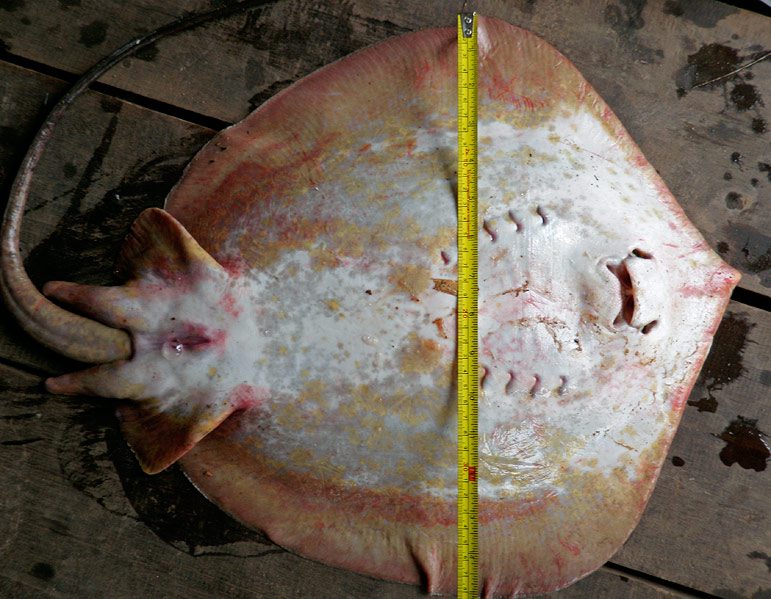Wednesday May 11, 2011

This freshwater stingray (Dasyatis laosensis) was photographed by our team while surveying fishermen in a small village of the Mekong Basin, in central Lao PDR. Usually rays are caught incidentally as bycatch in seine nets or lines that are set for other species, but the fishermen still bring them to market because all species are used for essential food here. This species likes sandy habitats, and its disk can grow up to 2 ft. (62 cm) across. Stingray reproduction is very different from other fish. They are aplacental viviparous, which means the young grow in egg cases inside the uterus for a bit, but then leave the egg case and grow freely in the uterus before being born as live pups.
Most people would be shocked to hear that stingrays live in rivers, as the famous rays are marine species like the large manta ray. The Mekong River is so huge that it actually has its own version of the manta ray. The giant freshwater stingray (Himantura chaophraya) grows up to almost 8 ft (2.4 m) wide, weighing in at over 1000 lbs. (500-600 kg). Unfortunately, the freshwater stingrays of the Mekong are increasingly rare as a result of fishing pressure and habitat change, and several species are classified as endangered.
Photo source: FISHBIO
